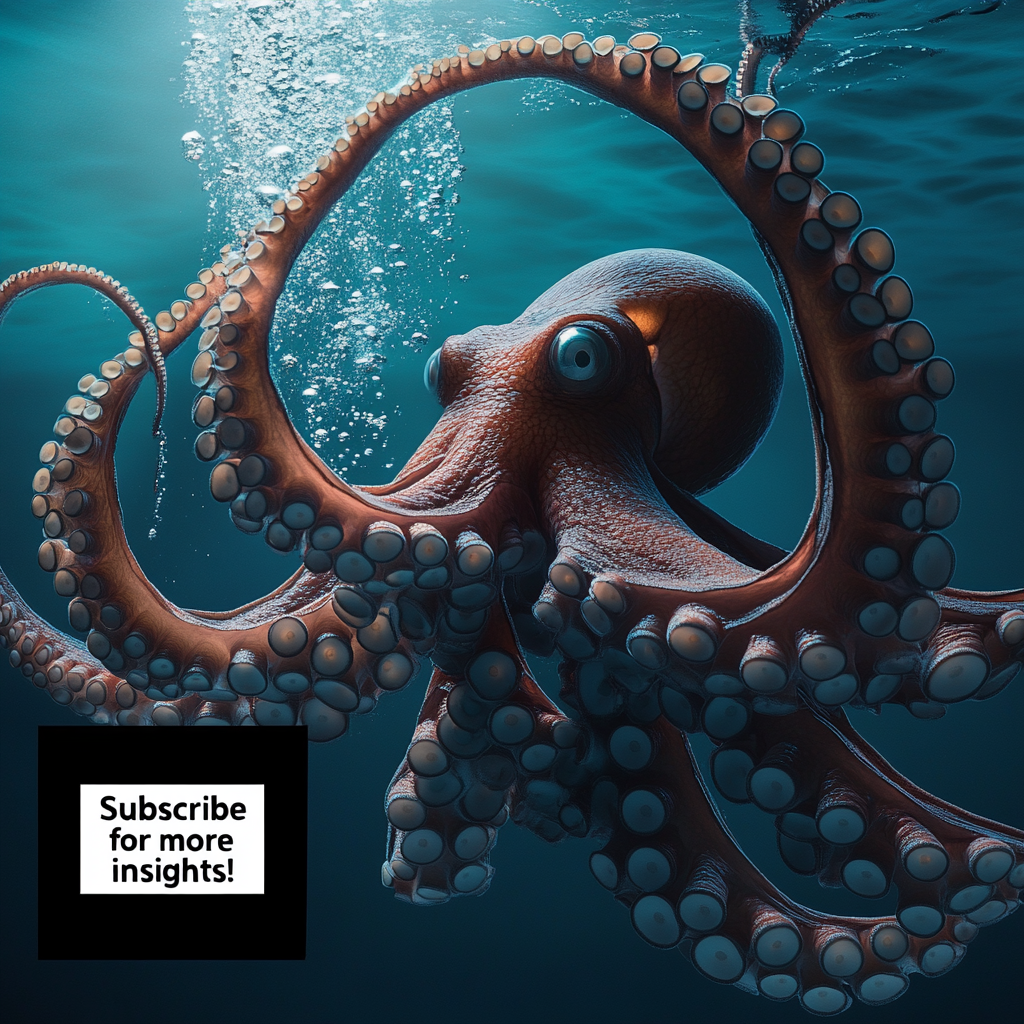
Aquatic Salvage Solution: Octo-Tech Adhesive Innovation
In the mysterious embrace of our oceans, something remarkable is taking shape, perhaps even more fascinating than a mermaid’s tale or a sea monster myth—the ingenious, octopus-inspired adhesive developed by a team led by Associate Professor Michael Bartlett from Virginia Tech. This isn’t just another piece of tech to add to the already crowded toolbox of modern innovations; no, this is the ticket to a brave new world of underwater salvage and rescue operations where the deep blue meets the cutting edge of inspiration drawn from nature herself.
Picture the octopus. Incredible creature, isn’t it? Its innate ability to grip, hold, and manipulate objects with uncanny precision, even in the tempestuous depths of the ocean, has captured the imagination of many. Think of those sucker pads, their magnificent structure known as the infundibulum. It’s a fleshy marvel that can expand, contract and, most impressively, conform to whatever it encounters. If only we had something like that for our clumsy human hands, right?
Well, cue the research team, who decided that it was high time to channel that marine magic into something useful. Bartlett and his crew have crafted an adhesive that mimics these extraordinary suckers. It features an elastic, curved stalk equipped with a dynamic, deformable membrane that grips like a pro on a mission and lets go when it's time to release. This glow-in-the-dark superhero of glue is 1,000 times stronger when activated compared to its chill-out state, snapping into action faster than a TikTok trend. In just about 30 milliseconds, this adhesive shifts from passive to active, capable of taking on challenging underwater tasks more efficiently than you can say 'octopod.'
This adhesive isn’t picky, either. It can tackle a wide range of underwater objects, whether you’re trying to lift a boulder that would make Atlas sweat or delicately grab hold of a dainty shell. During tests, they even constructed a cairn—yes, a literal stack of rocks—showcasing the adhesive's charm as it deftly picked up various rugged shapes and sizes without jeopardizing the whole operation. It's like watching a well-rehearsed dance performance, but with rocks instead of dancers. One could argue this is the aquatic art of balancing; after all, don’t we all want to be as skilled as an octopus in a game of underwater Jenga?
Bet you’re wondering about how long this miraculous adhesive can hold its ground (or should I say water?). The durability of this newfound wonder is jaw-dropping. In controlled test environments, it maintained its grip over 100 cycles, holding onto a rough, knobbly rock underwater for over seven straight days before cheerfully letting it go on command. Think of the possibilities! This resilience is significant for underwater salvage operations—no more worrying about whether the adhesive will let go right when you need it the most.
Now, before you start picturing divers achieving feats of underwater wizardry to the soundtrack of epic orchestras, let’s talk potential applications. Imagine this making waves in underwater salvage operations, allowing for the gentle retrieval of precious cargo from sunken ships without the typical carnage. Picture it in rescue diving, an easy fix when calamity strikes at sea or in the depths below. Underwater archaeologists, who often face the delicate challenge of preserving artifacts while bringing them to light, stand to gain considerably from this tech too. And don’t sleep on the healthcare sector—think about handling medical instruments that have taken a dip or a surgeon operating in a slightly wet situation.
And what’s even more thrilling? This new adhesive isn’t just a standalone PVC success story. Bartlett’s earlier invention—the Octa-Glove, an octopus-concocted glove with LIDAR sensors—will get a powerful upgrade. This glove already adeptly senses and grips objects without squeezing the life out of them, and now, with the octopus-inspired adhesive enhancing its capabilities, we’re talking about a match made in aquatic heaven. The combination has the potential to reimagine what divers and underwater researchers can achieve.
As we flip the pages of innovation, let’s not forget that this advancement is a shining example of biomimicry at work. When we look to nature, we often find solutions to some of humanity's head-scratching challenges. The ocean holds untold mysteries, and through understanding and adopting these natural wonders, we inch closer to mastering our own technological hurdles. And who knows? This could be the gateway to unlocking even more capabilities hidden in nature's array of complex creatures, a hint that we’re just getting started.
Now that we've dove deep into the folds of guided wonder, it’s time to ponder on the horizon of technology and science. Let’s stay curious and keep exploring! Want to stay up to date with the latest news on neural networks and automation? Subscribe to our Telegram channel: @channel_neirotoken, and together, we’ll be the first to discover what else the universe has to offer!

